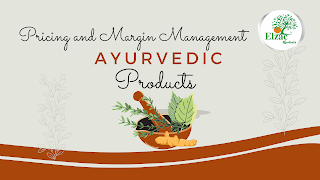🌿 Top Benefits of Starting an Ayurvedic PCD Franchise with Elzac Herbal India India’s Ayurvedic industry is booming — and smart entrepreneurs are looking for low-risk, high-growth opportunities in this sector. One of the most popular and successful business models is the Pcd Franchise . And when it comes to choosing the right company, Elzac Herbal India stands tall with its trusted products, partner-friendly policies, and growing reputation. ✅ 1. Low Investment, High Returns Unlike manufacturing or retail chains, PCD franchises require low startup costs . You don’t need a factory, R&D lab, or big infrastructure. With a small investment, you can start earning profits right from the first month — especially with high-quality, in-demand Ayurvedic products. 🌐 2. Monopoly Rights in Your Area Elzac offers area-wise exclusivity , meaning no other partner will compete with you in your territory. This gives you control, long-term market stability, and full opportunity to build yo...
Pricing and Margin Management:
Costing analysis:
Accurately calculate your product costs, including ingredients, manufacturing, packaging, distribution, and marketing expenses to determine your break-even point and set profitable margins.- Leave no stone unturned: Factor in all costs, including raw materials, production, packaging, transportation, storage, marketing, and labour. Don't forget overhead expenses like rent, utilities, and insurance.
- Calculate your break-even point: Determine the sales volume necessary to cover all your costs. This helps set minimum pricing thresholds.
- Monitor cost fluctuations: Regularly review and update your cost analysis to account for changes in material prices, manufacturing processes, or market trends.
Competitive pricing:
Analyze competitor pricing and market trends to set competitive prices that offer value to your customers while ensuring sustainable profit margins for your business.- Research your competitors: Analyze their pricing strategies for similar products, understanding their positioning and target audience.
- Consider value perception: Don't just focus on the lowest price. Assess the perceived value your products offer compared to competitors to justify your pricing.
- Stay agile: Adapt your pricing based on market trends, seasonal shifts, and competitor actions. Offer temporary discounts or promotions to remain competitive while maintaining healthy margins.
Dynamic pricing:
Consider flexible pricing strategies like seasonal discounts, promotional offers, and bundling products to attract customers and boost sales.- Experiment with different strategies: Utilize seasonal discounts, loyalty program incentives, bundled product offers, or flash sales to attract customers and increase sales volume.
- Personalize pricing: Consider dynamic pricing based on customer segment, location, or purchase history to optimize conversions and profitability.
- Monitor effectiveness: Track the impact of your dynamic pricing strategies and adjust them as needed to maximize ROI without compromising brand value.
Margin monitoring:
Regularly track your profit margins and adjust your pricing or cost structure as needed to maintain financial stability and growth.- Track margins regularly: Closely monitor your profit margins on individual products and overall product lines. Set up reporting systems for efficient tracking and analysis.
- Identify margin pressures: Analyze cost drivers and identify areas where you can optimize expenses or streamline operations to improve profitability.
- Make data-driven decisions: Use your margin data to inform pricing adjustments, product portfolio changes, or supplier negotiations to ensure long-term financial sustainability.
Additional Tips:
- Negotiate with suppliers: Leverage bulk purchase discounts or establish long-term partnerships with suppliers to optimize your cost structure.
- Embrace automation: Utilize inventory management and accounting software to automate tasks and gain real-time insights into your financial performance.
- Seek professional advice: Consult with financial experts or accounting professionals for strategic pricing guidance and margin optimization strategies.
By meticulously analysing your costs, staying informed about market trends, and implementing flexible pricing strategies, you can ensure your Ayurvedic distribution business remains profitable and competitive in the long run. Remember, effective pricing is a balancing act between value for your customers and financial sustainability for your business.
Check out: Ayurvedic pcd franchise company list
Previous Chapter: Customer Relationship Management
Other Chapters of Ayurvedic Distribution Success course
Module 1: Introduction to Ayurveda and its Business Landscape- History and principles of Ayurveda
- Understanding the Ayurvedic market
- Distribution Business Basics
- Ayurvedic Distribution Landscape
- Benefits of becoming an Ayurvedic distributor
Module 2: Setting Up Your Ayurvedic Distribution Business
Module 3: Sourcing and Managing Ayurvedic Products
Module 4: Marketing and Sales Strategies for Ayurvedic Distribution
Bonus Modules:
- Market Research and Niche Identification
- Business Planning and Financial Projections
- Legal and Regulatory Requirements
- Operational Set-up
Module 3: Sourcing and Managing Ayurvedic Products
- Identifying Reliable Suppliers
- Product Portfolio Management
- Inventory Management
- Packaging and Labelling
Module 4: Marketing and Sales Strategies for Ayurvedic Distribution
- Building Brand Awareness
- Sales Strategies for different Channels
- Customer Relationship Management
- Pricing and Margin Management
- Addition tips
Bonus Modules:




Comments
Post a Comment